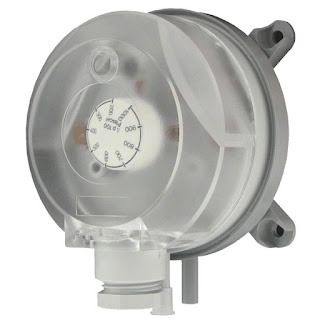Today I studied about autoclaves and SOP of the autoclave, So I thought to write small article what I learn from the SOPs for any person who would like to study. Autoclave is a specialized equipment used to carry out industrial and scientific processes requiring elevated temperature and pressure in relation to ambient pressure temperature. Autoclaves are use in medical applications to perform sterilization. PhotoLink: https://www.google.com/searchq=autoclave+machine&sxsrf=ALeKk015_0JI7icmpRvyoWOT7pO9ooi3RA:1588430738705&source=lnms&tbm=isch&sa=X&ved=2ahUKEwjP47jPtZXpAhVQbysKHQfVBuUQ_AUoAXoECBMQAw&biw=1366&bih=610 Autoclave is use for Cultures and stocks of infectious material, Culture dishes and related devices, Discarded live and attenuated vaccines, Contaminated solid items such as: petri dishes, pipettes, gloves, paper towels, lab coats, solid and liquid waste, Items for sterilization such...
Today I am planing to discuss about sensors used in BMS systems. In my work places used Dwyer sensors for the installation, So most of my explanations will based on this sensors. But there are lots of sensor manufacturing companies around the world. As we understand previous article BMS system mainly control HVAC system in the building and most of the other services will monitor (Ex. Fire System, Plumbing System...etc.). First I discuss about sensors used in HVAC systems.
Find Bellow mostly used sensors in HVAC systems,
- Temperature sensors
- Outdoor Temp and RH sensor
- Flow switch
- Pressure Sensors
- Differential Pressure Sensor
- CO2 sensor
- Static Pressure Sensor
- Flow Meter
Temperature Sensors :
We use two type of sensors in the BMS system, one is duct type and other is immersion type sensors. Duct type mainly used to measure air temperature in air handling unit (AHU) and air ducts. Immersion type sensors use to measure water temperature in chilled water supply and chilled water return pipes. these sensors comes with different size probs ( 4", 6",8" and 12"). This is the basic idea about sensor and sensor installation and wiring diagrams I will discuss separate article.
Photo Link: https://www.dwyer-inst.com/Products/
Outdoor Temp. and RH sensor :
This is used to measure outdoor air temperature and humidity level. Use of this sensor will discuss later with control methods. This has current or voltage humidity transmitter and passive temperature thermistor or RTD output (Resistance temperature detector).
Photo Link: https://www.dwyer-inst.com/Products/
Flow Switch :
This is mainly use to check water flow status in chiller input and output before sending switched on signal to chiller. Normally we use paddle type flow switches. For the one chiller we need 4 sensors to check all chiller inputs and outputs.
Pressure sensor/differential pressure sensor/differential pressure switch :
Wet pressure sensors use to check chilled water header pressures. Also we use wet differential pressure sensors for bypass valve operation. And we use ADPS sensors to measure AHU filter clog status.
CO2 / CO sensor :
These sensors used to check air quality. In AHU we use CO2 sensor to check CO2 level in the particular zone to control fresh air damper and exhaust damper. Also In car park we use these sensors to control exhaust and fresh air fans.
Photo Link: https://www.dwyer-inst.com/Product/AirQuality/CarbonDioxideTransmitters/SeriesCDT
Flow meter :
Flow meter is use, when we plan to bill for air conditioner use for tenants. Normally we use electromagnetic flow meters.
Other than these sensors we use,
- Occupancy sensors (PIR - Passive Infrared Sensor)
- Light Level Sensors
- Water Level Sensors
- Water meters for plumbing system
These sensors working principle, installation, data output methods and connection details we will discuss our next article.










Comments
Post a Comment